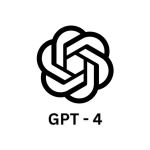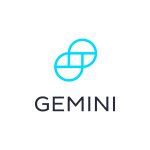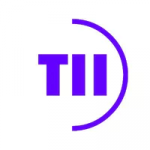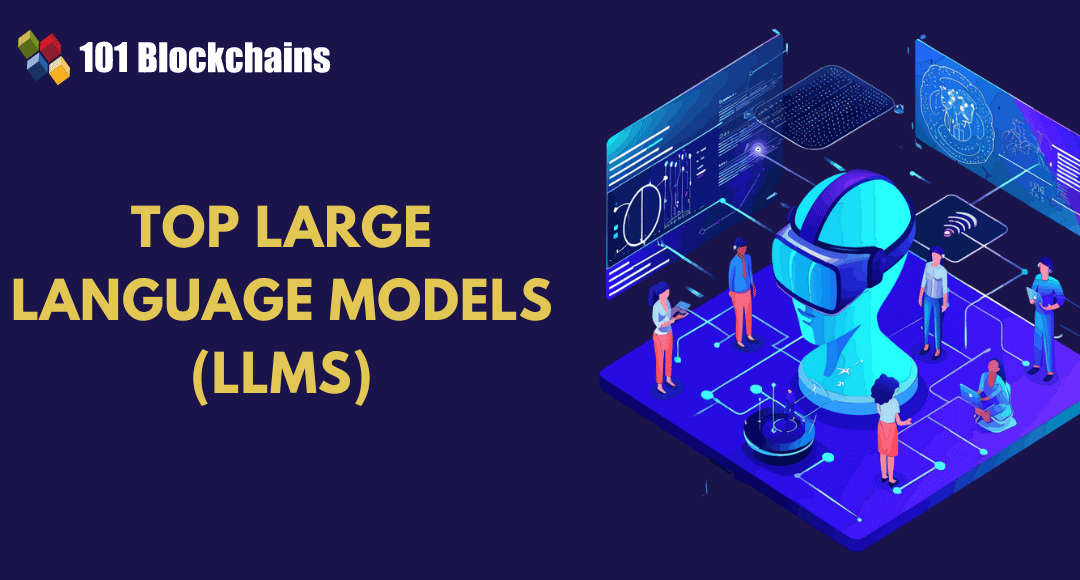Large Language Models are unique AI systems that rely on deep learning for training on large datasets to understand queries in natural language and generate new text. The best large language models in the market right now have found the path to growth with the support of attention mechanisms. Attention mechanisms are special machine learning techniques that help in simulating cognitive capabilities of humans. LLMs can identify patterns in text, predict the next word in a sentence and translate languages.
The power of LLMs to generate contextually relevant and coherent content makes them one of the prominent highlights in the artificial intelligence landscape. LLMs can help in automation of repetitive tasks, thereby improving communication and content creation. Tech giants such as Google, Meta and Microsoft have come up with unique LLMs that offer different appealing functionalities. Let us learn more about the top large language models that have the potential to revolutionize the future of AI.
Discovering the Best LLMs in the World
Large Language Models have become more popular due to the applications they have in different areas. The different types of large language models available in the world can serve a wide range of purposes. You can use LLMs to build customer service or general-purpose chatbots, sentiment analysis tools and language translation. LLMs can also help with data analysis, content moderation and conversion of text to computer code.
The selection of an LLM can be a tough task when you have multiple options at your disposal. However, you can use your goals as the benchmarks for choosing LLMs. It is also important to pay attention to other factors such as ease of use, integration compatibility, scalability, customization, data privacy and language support. Identify the best LLM for your needs from the following list of the top entrants in the LLM ecosystem.
GPT-4
 The first addition among the most advanced LLMs is GPT-4, the driving force behind ChatGPT Plus. It is the latest version in the list of best LLMs crafted by OpenAI. GPT-4 is capable of working on natural language processing tasks with the help of simple text prompts. GPT-4 has also gained attention for its versatility in performing technical as well as creative tasks.
The first addition among the most advanced LLMs is GPT-4, the driving force behind ChatGPT Plus. It is the latest version in the list of best LLMs crafted by OpenAI. GPT-4 is capable of working on natural language processing tasks with the help of simple text prompts. GPT-4 has also gained attention for its versatility in performing technical as well as creative tasks.
Users can leverage GPT-4 to add images for generating captions and classifying them according to different traits. GPT-4 also overcomes the limitations of its predecessors with the capabilities to generate long-form content. The ability to process text and image inputs together is one of the most noticeable advantages of GPT-4. You can also rely on GPT-4 to generate content without harmful biases albeit with concerns of inaccuracy in the responses in some cases.
Enroll in our Certified ChatGPT Professional Certification Course to master real-world use cases with hands-on training. Gain practical skills, enhance your AI expertise, and unlock the potential of ChatGPT in various professional settings.
BERT

BERT is a useful LLM for NLP tasks, including sentiment analysis, translation and sentence classification. You can use it for training machine learning models with text-based data to perform a wide range of tasks. The most crucial advantage of BERT is the assurance of better contextual relevance in the results due to bidirectional context representation. BERT also features multilingual capabilities and offers the flexibility for fine-tuning by adding an additional output layer.
ERNIE

The best features of ERNIE point at its capabilities to work on different NLP tasks with enhanced training due to the knowledge graphs. You can use it for applications that need cross-lingual understanding due to its capabilities to understand multiple languages. It is also important to note that the use of knowledge graphs might cause restrictions for using ERNIE in niche industries.
Take your first step towards learning about artificial intelligence through AI Flashcards
Google Gemini
 Google Gemini is also another top example of large language models that can revolutionize the future of AI. It is one of the large language models examples that marks the entry of Google into the LLM ecosystem. Gemini is capable of working on different types of complex NLP tasks with versatility and assurance of better performance. The massive training dataset of Google Gemini ensures that it can generate text with higher contextual sensitivity and accuracy.
Google Gemini is also another top example of large language models that can revolutionize the future of AI. It is one of the large language models examples that marks the entry of Google into the LLM ecosystem. Gemini is capable of working on different types of complex NLP tasks with versatility and assurance of better performance. The massive training dataset of Google Gemini ensures that it can generate text with higher contextual sensitivity and accuracy.
Gemini has been optimized to work in real-time applications with capabilities to offer faster responses, such as customer service chatbots. You can use it for different NLP tasks such as language translation, text generation, summarization and sentiment analysis. The option for fine-tuning Gemini with specific datasets offers the flexibility for customizing the LLM to address specific business requirements.
Orca

Orca also empowers small language models for better reasoning by using explanation tuning to imitate the reasoning process of large models. It also uses new algorithms for optimization of processing power, thereby reducing energy consumption associated with LLM operations. Orca also offers the flexibility for fine-tuning on niche datasets to ensure that it can adapt to the specific needs in an industry.
Cohere

Cohere is the best platform for creating top performing large language models with its user-friendly API. It also helps users in fine-tuning models on their data, thereby offering more accurate and personalized responses according to specific contexts and business needs. The most important aspect of Cohere is the transparency regarding training of language models.
Identify new ways to leverage the full potential of generative AI in business use cases and become an expert in generative AI technologies with Generative AI Skill Path
PaLM

The advanced version or PaLM 2 has emerged as the top choice for research and has also been integrated in different product applications. The diverse datasets used in its training make PaLM useful for complex reasoning tasks, including language translation and coding.
Claude

Users can prefer Claude over other types of large language models for ensuring consistency in the style and tone of customer interactions. You can also use Claude to extract valuable information from business documents and integrate it in existing tech stacks without advanced expertise.
Llama

Llama also has the capability to help you with complex tasks such as dialogue generation and language translation. You can use it for code generation and obtain explanations for code in natural language.
Falcon

The best thing about Falcon is the integration of latest advancements in AI for better natural language understanding and generation. Falcon also helps in faster decoding without degrading quality.
Want to understand the importance of ethics in AI, ethical frameworks, principles, and challenges? Enroll now in the Ethics Of Artificial Intelligence (AI) Course
Final Thoughts
The list of large language models showed some of the best options that you should try for NLP tasks. You can notice that the large language models examples have shown distinctive traits that make them useful for different applications. The ability to use LLMs does not come at the cost of learning complex technical concepts. Anyone can tap into the power of large language models with the right guidance.
The scope of large language models extends beyond simple NLP tasks such as natural language understanding and generation. You can use LLMs for coding and debugging alongside obtaining explanations for code in natural language. Learn more about the fundamentals of LLMs and discover the ways to use them to your advantage right now.










